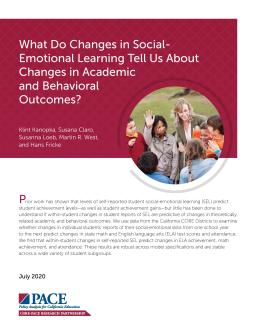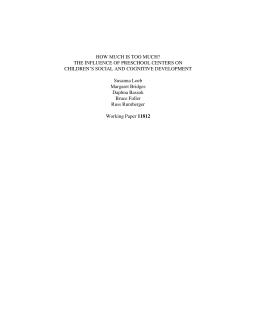Published
Summary
This study investigates racial disparities in school closures both within California and nationally. Findings highlight an alarming pattern: Schools enrolling higher proportions of Black students are at significantly increased risk of closure relative to those enrolling fewer Black students, a pattern that is more pronounced in California than elsewhere in the United States. The findings underscore that school closures in California and elsewhere reflect racial inequalities that require adequate policymaking to ensure equitable and fair school-closure proceedings.
Lessons for COVID-19
Published
Summary
This brief discusses the impact of the COVID-19 pandemic on student absenteeism and academic and social-emotional outcomes using panel data from California's CORE Districts. Absenteeism has a negative effect on student outcomes, with math being more affected than English language arts, and middle school students suffering more than elementary or high school students. The study also shows that absenteeism negatively impacts social-emotional development, which can have further implications for student outcomes.
Published
Summary
This study used data from California CORE Districts to explore whether changes in students' self-reported social-emotional learning (SEL) predicted changes in academic outcomes and attendance. The findings revealed that within-student changes in SEL were positively associated with improvements in English language arts (ELA) and math achievement, as well as attendance, and were consistent across various student subgroups.
The Influence of Preschool Centers on Children’s Social and Cognitive Development
Published
Summary
Using national data from the Early Childhood Longitudinal Study (ECLS-K), this study examines the association between center-based care duration and intensity and pre-reading, math skills, and social behavior of young children. Children who start center care between ages two and three see greater academic gains, while starting earlier than age two may have negative social effects. Center intensity impacts academic gains for poor and middle-income children, but not wealthier children, and negatively impacts social development for Blacks and whites but not Hispanic children.



